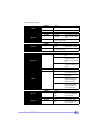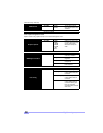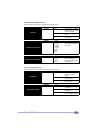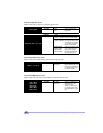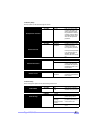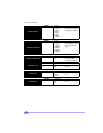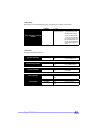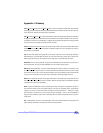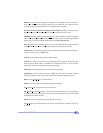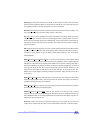
Tiger MP S2460
47
DRAM (Dynamic RAM): widely available, very affordable form of RAM which has the unfortunate ten-
dency to lose data if it is not recharged regularly (every few milliseconds). This refresh requirement
makes DRAM three to ten times slower than non-recharged RAM such as SRAM.
ECC (E
rror Correction Code or Error Checking and Correcting): allows data to be checked for errors
during run-time. Errors can subsequently be corrected at the same time that they’re found.
EEPROM (E
lectrically Erasable Programmable ROM): also called Flash BIOS, is a ROM chip which can,
unlike normal ROM, be updated. This allows you to keep up with changes in the BIOS programs without
having to buy a new chip. Tyan’s BIOS updates can be found at http://www.tyan.com
ESCD (E
xtended System Configuration Data): a format for storing information about Plug-n-Play devices
in the system BIOS. This information helps properly configure the system each time it boots.
Fault-tolerance: a term describing a system where one component can quickly be replaced without caus-
ing a loss of service, such as in a RAID system.
Firmware: low-level software that controls the system hardware.
Form factor: an industry term for the size, shape, power supply type, and external connector type of the
Personal Computer Board (PCB) or motherboard. The standard form factors are the AT and ATX,
although Tyan also makes some Baby-AT and ATX Footprint boards.
Global timer: onboard hardware timer, such as the Real-Time Clock (RTC).
Handshaking: a form of encryption. One system, typically the server, sends an encryption scheme to
another agent, typically a client. Thus, the client’s data is protected during transmittal to the server.
HDD: stands for H
ard Disk Drive, a type of fixed drive.
H-SYNC: controls the horizontal synchronization/properties of the monitor.
IC (I
ntegrated Circuit): the formal name for the computer chip.
IDE (I
ntegrated Device/Drive Electronics): a simple, self-contained HDD interface. It can handle drives up
to 8.4 GB in size. Almost all IDEs sold now are in fact Enhanced IDEs (EIDEs), with maximum capacity
determined by the hardware controller.
IDE INT (IDE Interrupt): a hardware interrupt signal that goes to the IDE.
I/O (I
nput/Output): the connection between your computer and another piece of hardware (mouse, key-
board, etc.)



